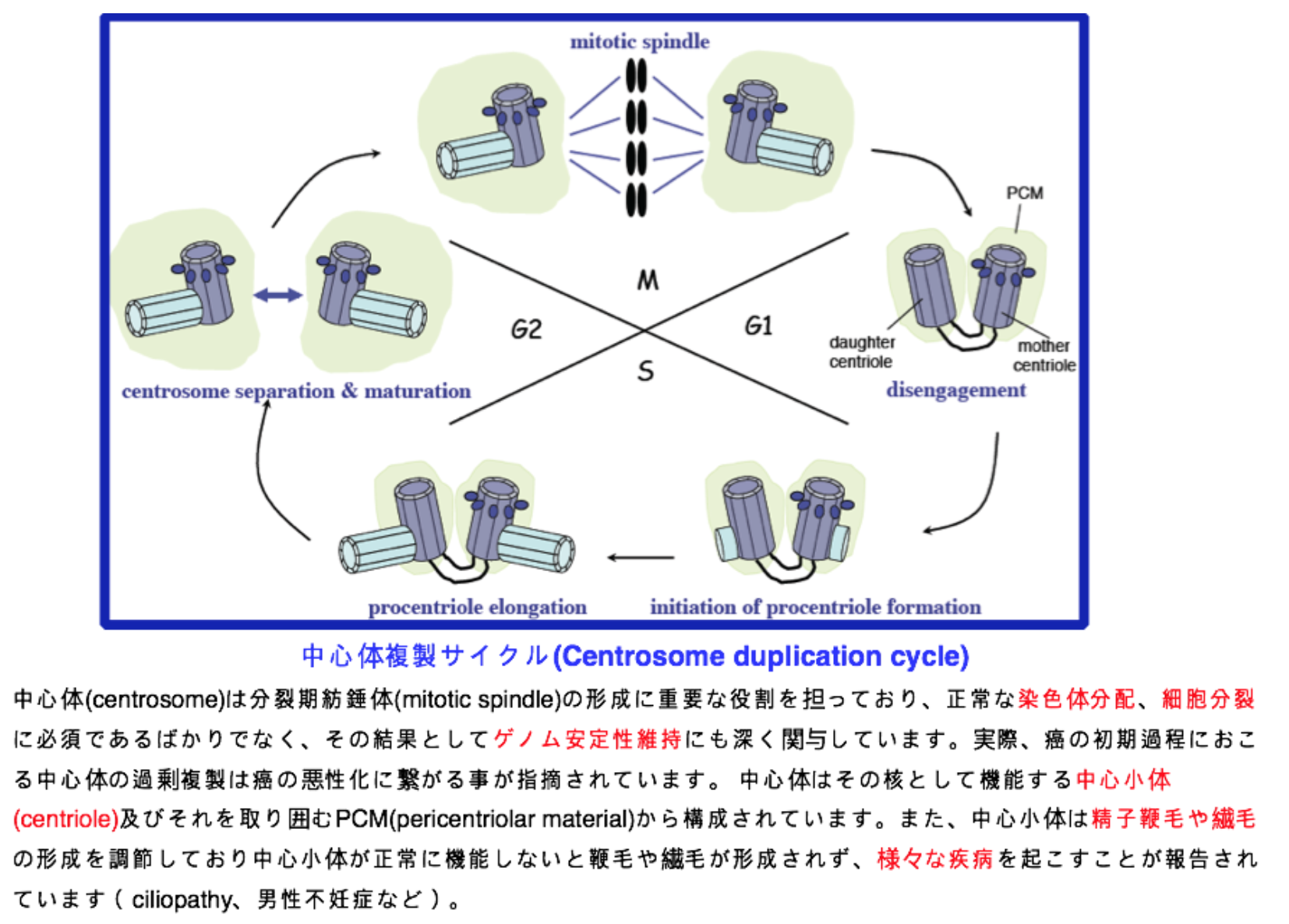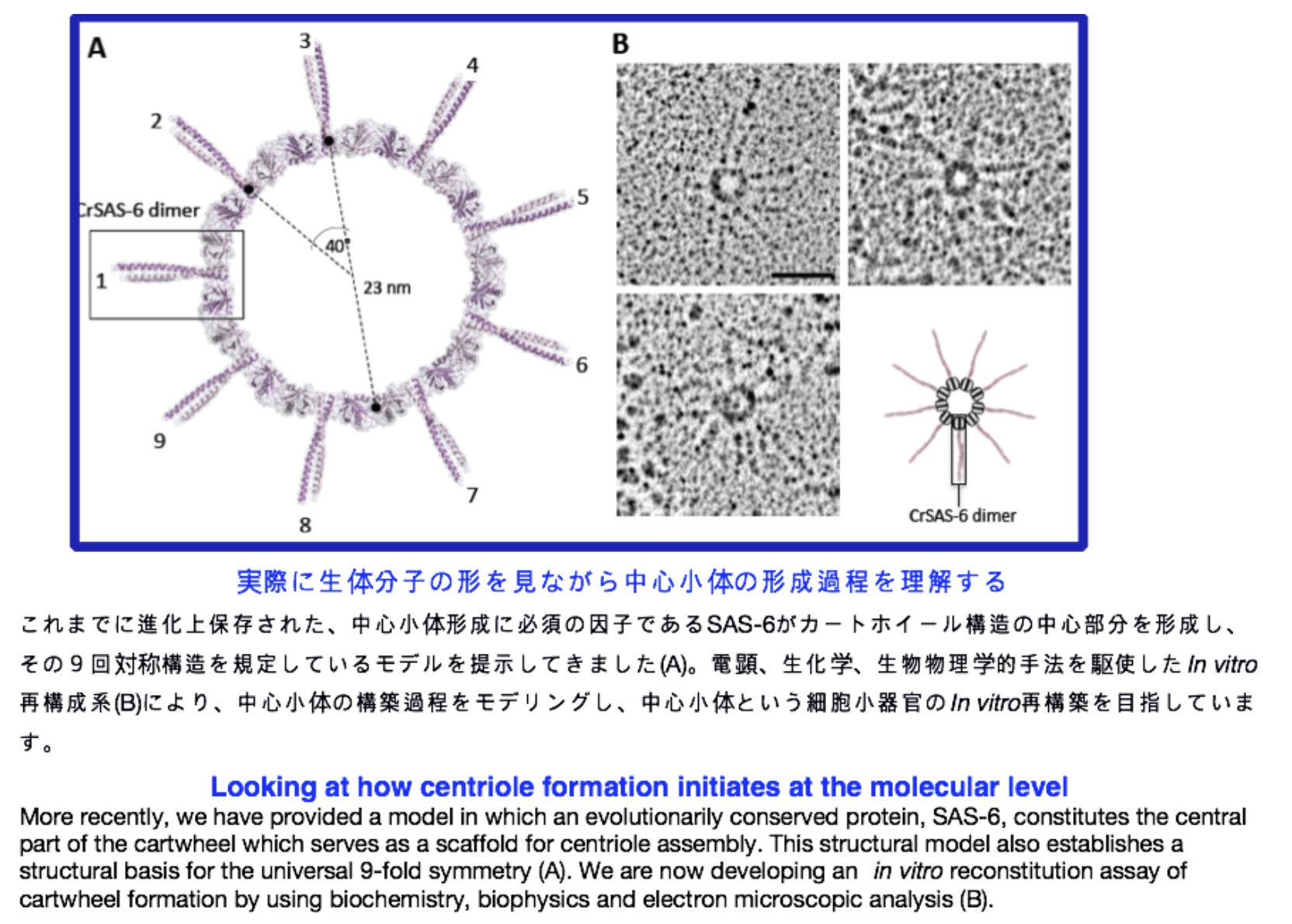

生命の有する最も基本的な特性の一つは「自己複製」です。これは単細胞生物など個体レベルで考える事もできますし、染色体複製など遺伝情報レベルで考える事もできます。同様に真核細胞において10億年に渡り、進化上保存されてきた細胞小器官である中心体も細胞周期ごとに一度だけ複製されます。中心体の主要な構成成分はタンパク質と考えられており、中心体という細胞内構造体の構築は多種のタンパク質による「自己組織化」ととらえることもできます。私達はこの美しい構造体の不思議な自己複製機構に潜んでいる基本原理の解明を目的の一つとして研究を進めています。また、中心体が関与する細胞がん化及び遺伝子疾患の原因解明を行い、創薬研究、特に次世代型細胞分裂阻害剤の開発に応用することを目指しています。
中心体以外にも多岐に渡るプロジェクトを展開しています。例えば 、生体内の細胞間相互作用をin vitroで再構成し、最新の細胞遺伝学や次世代シークエンシング等の手法を適用することで、新しい分野を開拓することを目指しています。下記がおおまかな進行中/計画中のテーマです。
多種のがん細胞を含む、多様なヒト培養細胞をモデル系として細胞生物学、生化学、細胞遺伝学、生物物理学、構造生物学、シミュレーション等の多彩な手法を用いて研究しています。また、国内外の様々な研究者と共同研究しながら、新しい解析手法の導入も進めています。
「NIGchannel研究者インタビュー 北川大樹 特任准教授」
The mechanisms of centrosome duplication have been a long-standing mystery in biology for over a century. Like the genetic material, centrosome duplication must occur once per cell cycle, such that the two resulting centrosomes assemble a bipolar spindle, ensuring high fidelity chromosome segregation during mitosis. Aberration in the number of centrosomes is implicated in genome instability and tumor formation. The centrosome is composed of a pair of centrioles surrounded by pericentriolar material (PCM). Centrioles also have the capacity to act as basal bodies that generate cilia and flagella across eukaryotic evolution. Despite being essential for centrosome duplication, the mechanisms governing centriole formation remain poorly understood.
Our laboratory mainly focuses on understanding the mechanisms of centrosome duplication, with a particular emphasis on the molecular basis of centriole formation. To this end, we are currently utilizing the combination of innovative and multi-disciplinary approaches including biophysics, biochemistry, structural biology, genetics and cell biology. We are investigating the following specific aims primarily by using many types of human cell lines as model systems.
● Mechanisms of centrosome duplication and its theoretical model
● Mechanisms of cell division regulated by divergent molecular machineries
● Identification and characterization of non-coding RNAs that regulate cell division
● Cilia and signal transduction
● Comparative cancer cell biology and its application to anticancer drug development
● Forward genetic analysis of cell-cell communication with human cells


